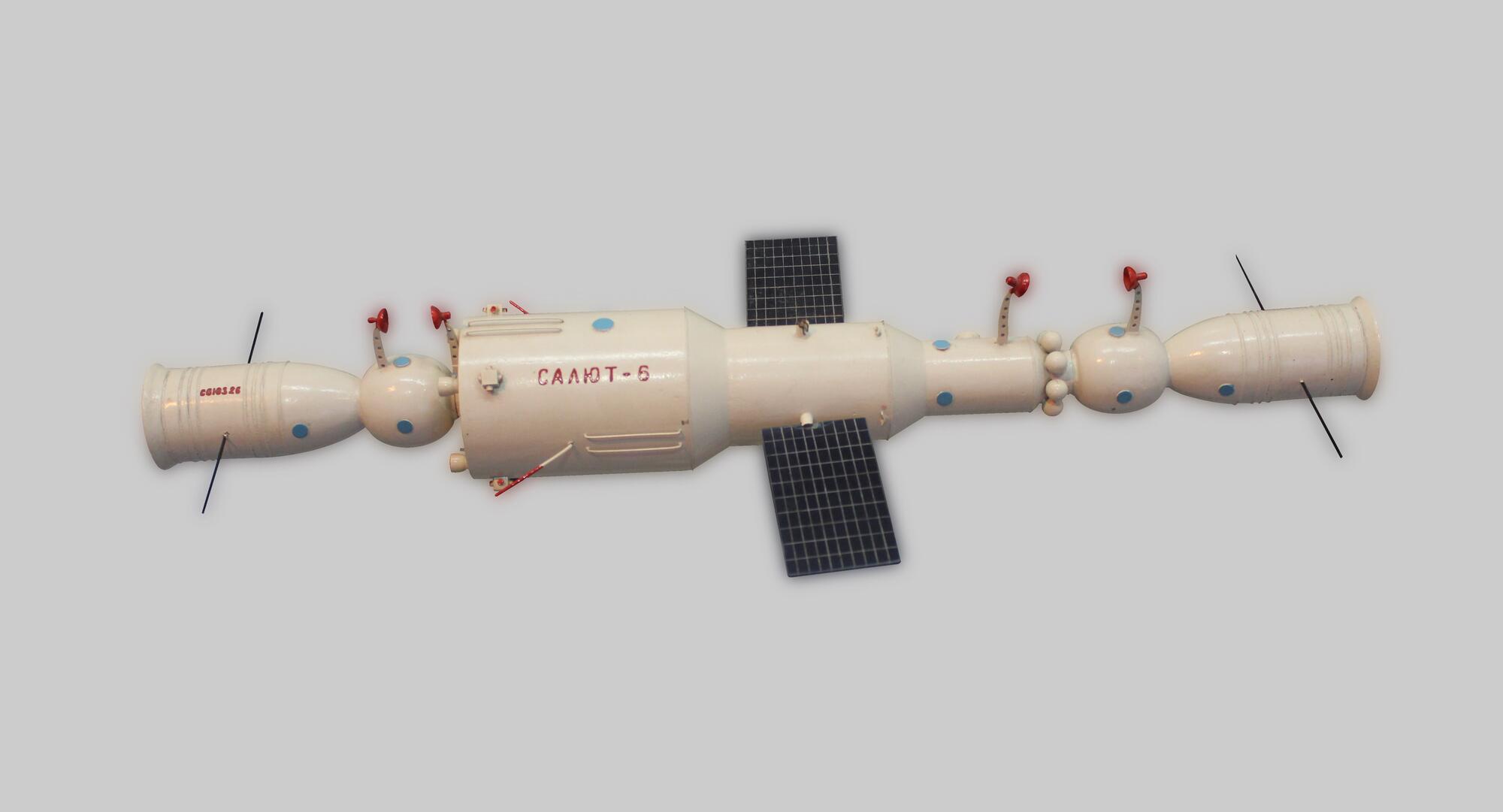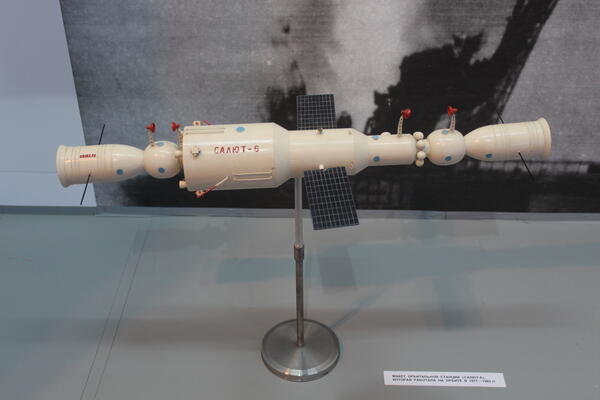The orbital complex, the models of which is presented in the museum, consists of the orbital station ‘Salut-6’ and the spacecraft ‘Soyuz-26’ and ‘Soyuz-27’ docked to it from two sides.
‘Salyut-6’ was launched into the orbit by the launch vehicle ‘Proton’ on September 29, 1977. The station continued scientific, technological, biological and medical research under weightlessness conditions, which were started on the previous ‘Salyut’ starships.
For the first time ever ‘Salyut-6’ station was equipped with two docking units. This allowed crew changes to take place not on Earth, but in space, and made the station suitable for permanent habitation. The two docking units also allowed for the delivery of fuel, air, water, power and clothing to the station, as well as new research and repair equipment to be carried out simultaneously by two manned or cargo ships.
‘Salut-6’ had large internal useable volume - 90 cubic meters - and three solar panels with an area of up to 60 meters square.
During the period of operation 26 cosmonauts worked at ‘Salyut-6’ station comprising 5 main crews and 10 visiting expeditions. The latter included astronauts from other countries - Czechoslovakia, Poland, GDR, Bulgaria, Cuba, Hungary, Mongolia, Romania and Viet Nam - which had never happened before.
At ‘Salute-6’ astronauts have conducted more than 1550 different experiments in the field of materials production, geophysics, biology, medicine and study of natural resources of the Earth. They needed more than two tons of scientific instruments.
The station was reached by 17 manned and 2 unmanned ships of the series ‘Soyuz’ and ‘Soyuz T’, 12 automatic cargo ships ‘ProgrEss’ and one automatic cargo ship TKS (‘Cosmos-1267’), which was also used as a module. The engines of ‘ProgrEss’ were also used to correct the orbit of the station.
After the successful launch of the station ‘Salyut-7’ on April 19, 1982, the station ‘Salut-6’ was removed from orbit in July of the same year over the Pacific Ocean. It spent 1764 days in space and made approximately 27,785 orbits around the Earth.
‘Salyut-6’ was launched into the orbit by the launch vehicle ‘Proton’ on September 29, 1977. The station continued scientific, technological, biological and medical research under weightlessness conditions, which were started on the previous ‘Salyut’ starships.
For the first time ever ‘Salyut-6’ station was equipped with two docking units. This allowed crew changes to take place not on Earth, but in space, and made the station suitable for permanent habitation. The two docking units also allowed for the delivery of fuel, air, water, power and clothing to the station, as well as new research and repair equipment to be carried out simultaneously by two manned or cargo ships.
‘Salut-6’ had large internal useable volume - 90 cubic meters - and three solar panels with an area of up to 60 meters square.
During the period of operation 26 cosmonauts worked at ‘Salyut-6’ station comprising 5 main crews and 10 visiting expeditions. The latter included astronauts from other countries - Czechoslovakia, Poland, GDR, Bulgaria, Cuba, Hungary, Mongolia, Romania and Viet Nam - which had never happened before.
At ‘Salute-6’ astronauts have conducted more than 1550 different experiments in the field of materials production, geophysics, biology, medicine and study of natural resources of the Earth. They needed more than two tons of scientific instruments.
The station was reached by 17 manned and 2 unmanned ships of the series ‘Soyuz’ and ‘Soyuz T’, 12 automatic cargo ships ‘ProgrEss’ and one automatic cargo ship TKS (‘Cosmos-1267’), which was also used as a module. The engines of ‘ProgrEss’ were also used to correct the orbit of the station.
After the successful launch of the station ‘Salyut-7’ on April 19, 1982, the station ‘Salut-6’ was removed from orbit in July of the same year over the Pacific Ocean. It spent 1764 days in space and made approximately 27,785 orbits around the Earth.


